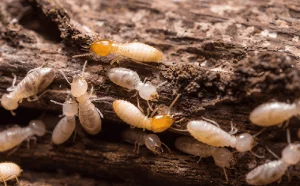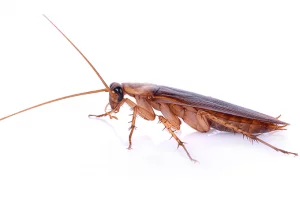We all know that termites can completely total a home here in South Florida. Like cockroaches, termites are just one of the downsides of living in a tropical paradise, but there are specific conditions that termites survive and thrive in better than others.
While the overall South Florida climate is out of your control, there are still steps you can take to create an environment that termites will steer clear of. Even if you can’t prevent termite damage completely, you can block off termites from specific areas, saving you from the costliest repairs and making the overall termite exclusion process more effective in the long-term.
Before you inspect your home, it is important to first understand that all termites are not created equal–nor do they all attack Florida homes in the same manner. Drywood termites attack from the air and cost U.S. property owners millions of dollar annually, while subterranean termites come up from the ground and cost U.S. property owners billions. Different species will react differently to certain environmental factors, but there are certain environmental conditions you can use to repel termites from key areas of your home.
Here are some key environmental conditions to be aware of, and strategies you can use to turn the termites’ environment against them:
Conditions That Help Drywood Termites
- Drywood termites will establish their nests inside the wood of your home. These termites do not need contact with the ground. If your home has gaps, cracks, or holes, these insects will exploit them, so inspect your home to ensure it is free of any holes, gaps, or tears anywhere in the roof or siding.
- Drywood termites are also known to get in through damaged screens and then begin to chew their way into window and door frames. It is important to make sure all your screens are in good working condition, and check your doors for any strange noises or sticking while in swing, as these are telltale indicators that termites have made their way inside.
- Drywood termite swarmers are highly attracted to light. Keep the curtains drawn at night and, if possible, replace exterior white lights with insect-resistant yellow light bulbs.
Conditions That Help Subterranean Termites
- Most subterranean termites establish their nests in the soil and come up from the ground to feed on the wood of a home. When the wood of a home directly touches the soil, it can inspire an infestation, so keep foundations covered.
- Termites are also likely to enter a yard that has wood or paper items that are sitting on the ground. Keep the yard cut and clear of any clutter – give them no reason to come onto your yard.
- Subterranean termites are moisture pests. Conditions of moisture around a home will attract these termites. Repair leaky spigots, broken gutter systems, and pipes, and remember to move items away from your foundation perimeter that keeps the sun from drying up rainwater.
- While subterranean termites can feed on any type of wood, they prefer soft or rotting wood. Soft wood allows them to feed faster and do damage more quickly. Inspect your home’s walls, siding, roof, and foundations for any signs of rot, and replace as necessary.
- Subterranean termite swarmers are attracted to a home that is lit at night, so keep blinds closed and consider switching to yellow outdoor light bulbs.
- Subterranean worker termites are attracted to dark, shaded areas. They will most often create mud tubes on foundation walls that are obscured by a deck, porch, patio, or other external structure that provides darkness.
- Subterranean termites do not eat wood exclusively; they’ll also feed on cellulose, so keep decorative plants away from the foundation and doors.
The best way to prevent termite damage is with ongoing, year-round termite protection from a termite control specialist. If you do not have this protection yet, reach out to Nozzle Nolen. We offer industry-leading termite control for businesses and homes in South Florida.

